In photography, if you want to make a beautiful composition of the picture, then the picture must have some elements, and the correct distinction, primary and secondary positioning and performance of these elements must be carried out. Here, the elements of the scene in the picture are mainly divided into four parts:
- Subject
- Companion
- Environment
- Leave blank
Table of Contents
Focus on the Subject
The subject is the main part used to express the main idea when shooting. It is the center of the picture structure and the interesting point of the picture. The subject should occupy a prominent position. It can be an object or a group of objects. We can say that a picture without a subject cannot be called a complete photographic work.
Generally speaking, there are two ways to highlight the subject:
1. Directly highlight the main body. Fill the frame with the subject, and match the appropriate lighting and shooting techniques to make it more eye-catching.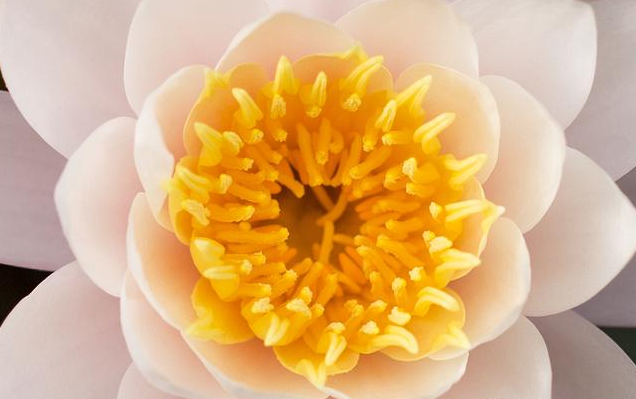
The subject occupies most of the screen space
2. Indirect performance of the main body. It is through rendering the environment to set off the main body. At this time, the main body does not necessarily occupy most of the area of the screen, but it will occupy a more prominent position.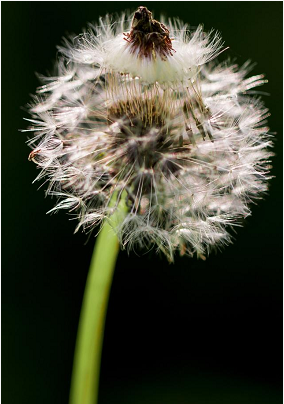
Use the contrast of dandelion and background to highlight the subject
There are 8 specific methods for focusing on the subject:
1). Express and highlight the subject in close-ups,
2). Place the subject in the foreground, so that not only can the subject stand out, but also more elements can be captured for the picture.
3). Use a background that contrasts sharply with the subject to set off the subject in shades or tones,
4). Use bright light to emphasize the subject,
5). Blur the background to further highlight the subject,
6). Utilize converging lines and other objects with directional meaning to converge to the subject to achieve a certain visual directionality.
7). Set the main body at the center of the screen or slightly to the left or right,
8). Use a certain shooting angle to highlight the subject.
Companion-Construct the Plot of the Picture Together with the Subject
Companion refers to the object that forms a certain plot with the subject on the screen and helps express the characteristics and connotation of the subject.
In layman’s terms, the main role of the companion is to provide a foil for the subject. If the subject is a red flower, then the green leaf may be the companion. Because of the accompaniment, the visual language of the whole picture will be more vivid and lively.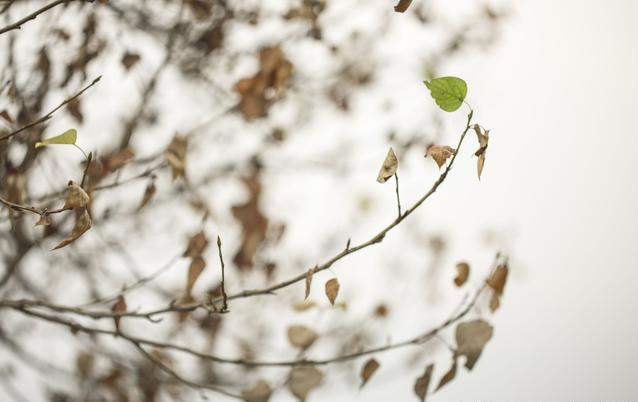
In the picture, the dead leaves act as companions to the green leaves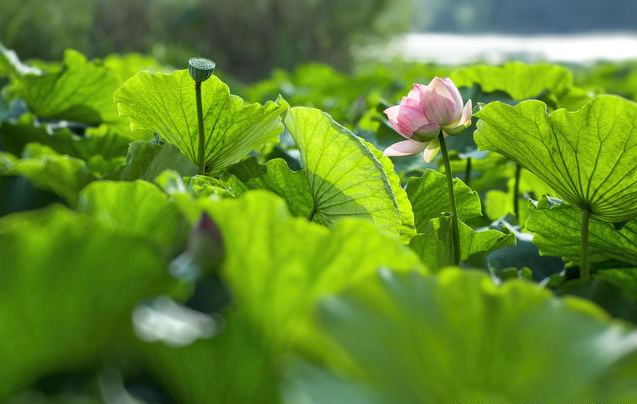
We can see in the picture above, the lotus leaf serves as the companion of the lotus
During the process of using the companion to modify the subject, pay attention to:
- The companion is mainly used to deepen the connotation of the subject. In the process of performance, don’t overwhelm you, do not distinguish between primary and secondary,
- To deal with the accompaniment, in essence, is to deal with the plot. Therefore, in the choice of companion, the photographer should pay attention to whether it has a positive effect on the subject. Don’t copy it mechanically and move away from the subject, so that the picture loses its original meaning.
- Companion also has two kinds of direct expression and indirect expression. Sometimes, the companion does not have to be shown in the picture, and the plot can also be constructed with the subject outside the picture.
Environment-Setting Off the Main Body With the Environment
In the photographic picture, in addition to the subject and the companion body, some elements can also be seen as part of the environment. It plays a certain role in supporting the main body and plot to strengthen the expressive power of the theme. The object that is in front of the subject and is part of the environment is called the foreground. What is behind the subject is called the background.
(1) Prospects
The foreground is the position in front of the subject and close to the camera. Its characteristic is that the image is larger in the picture, generally located around the picture. The objects using the foreground are generally flowers, trees, or people.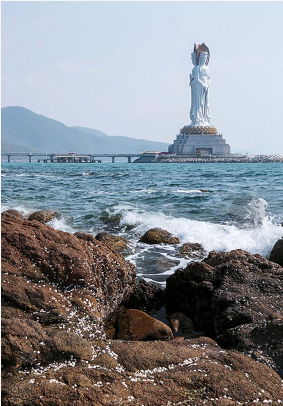
The reef is used as the foreground to enhance the sense of space in the picture
The application of different prospects plays a different role in the picture.
- Using some seasonal and local characteristics of flowers and trees as the foreground can further render the seasonal atmosphere and local colors, so that the picture has a strong atmosphere of life.
- The foreground can enhance the sense of space and perspective of the picture,
- The foreground can highlight the generality of the screen content. When expressing some things with rich content, placing the most characteristic part of the things to be expressed in the foreground position can further strengthen the content of the picture.
- Use foreground and background scenery to compare to deepen the theme,
- The prospects give people a subjective sense of status. For example, using distinctive features such as doors, windows, and buildings as the foreground, allowing them to occupy a larger position on the screen, can give the viewer an immersive sense of intimacy.
- The application of the foreground can enhance the balance of the picture,
- A certain blurring of the foreground can give people a hazy beauty.
(2) Background
The background refers to the scene behind the subject that is used to set off the subject. It plays an important role in highlighting the subject’s image and enriching the subject’s connotation.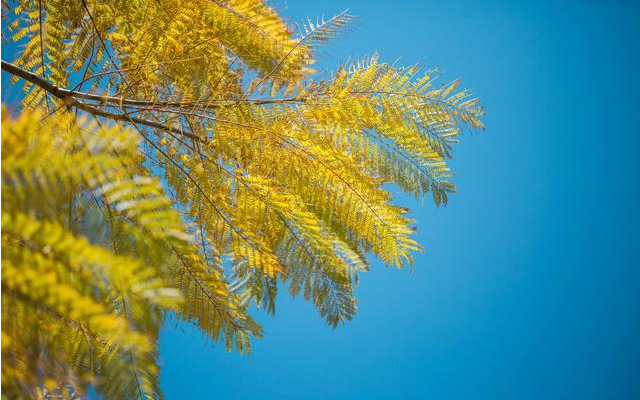
Shoot upside down, avoid ground debris
In the process of photography, three aspects should be paid attention to for the selection of the background of the picture: one is to grasp the characteristics, the other is to strive for simplicity, and the third is to have tonal contrast.
First of all, we must be good at capturing some sceneries with local characteristics, time and place as background, and clearly explain the premise of the incident, so as to facilitate the viewers to understand the work.
Second, the handling of the background strives to be concise. Photography itself is “subtraction”. In the process of photography, the dispensable and obstructive things in the background are subtracted to achieve the simplicity and refinement of the picture.
Some Useful Photography Techniques
We can use a variety of photography techniques to achieve this effect:
- You can avoid the messy scenery on the ground by shooting upside down, and use a clean sky as the background.
- Using the road, water surface, and grassland as the background by overhead shooting, the outline of the subject can be clear, and a concise background can be obtained at the same time.
- Use backlighting to hide the messy lines of the background in the shadows,
- Use a telephoto lens to blur the messy background, and the subject will be more prominent.
These methods can all get a concise background effect. Furthermore, the background should strive to form a hue or tonal contrast with the subject, so that the subject has a sense of three-dimensionality, a sense of space, and a clear contour line, thereby enhancing the visual impact.
The processing of the background is an important link in the structure of the photographic picture. Only by carefully choosing during shooting can the content of the picture be refined and accurate, and the visual image can be perfectly expressed.
Leave Blank — Create Artistic Conception
In addition to the visible physical objects, there are some blank parts on the photographic screen. They are composed of a single-tone background, forming gaps between solid objects. A single-tone background can be the sky, water, grassland, land, or other scenery. Due to the use of various photographic methods, these scenes have lost their original physical images, and a single tone is formed on the screen to set off other physical objects.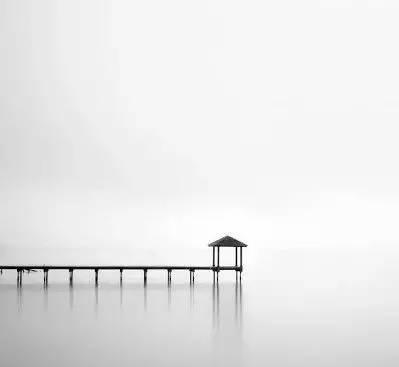
Although the blank part is not a physical object, it has played an immeasurable role in the picture.
Importance of Leaving Blank
First of all, leaving a certain amount of blank space on the screen is the need to highlight the subject. To make the subject more visually impactful, it is necessary to leave a certain amount of blank space around it. If the subject is placed in a mess of objects, it is difficult to appreciate its beauty. Only if there is a certain amount of space around the subject, the whole picture will be attractive.
Secondly, the blank space on the picture helps to create the artistic conception of the picture. If a picture is filled with physical objects without any blank space, it will give people a feeling of depression. Only when the blanks of the screen are left properly can one’s vision have room for maneuver, and the thinking may also change.
Of course, the photographer should pay attention to the ratio of the blank area to the area of the physical object. It is best not to make the ratio of the two in the picture equal, otherwise the picture will appear dull.
Furthermore, leaving blank space can give the object a certain amount of movement space. Especially when shooting people or objects with forward momentum, there is a certain amount of blank space in front of the subject, so that the objects in motion have room to stretch, and it also conforms to the viewer’s visual habits.
